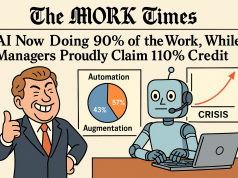In the landscape of labor and employment, a seismic shift is underway that is redefining the very fabric of worker advocacy. This new era, marked by the emergence of grassroots movements, is not the product of a single event but rather a response to the culmination of socio-economic shifts, technological progress, and cultural transformations that have been brewing for decades. As we unpack the complexities of this new labor awakening, we are confronted with the reality that traditional unionism is no longer the sole harbinger of change for workers’ rights and welfare.
The surge in grassroots activism has been fueled in part by the realization that existing structures often fail to address the nuanced demands of the modern workforce. Casualization, the gig economy, and precarious employment have exposed the limitations of traditional collective bargaining, prompting workers to take matters into their own hands. The digital age has also played a role, equipping workers with new tools for mobilization and amplification of their causes. Social media platforms have evolved into digital picket lines, where campaigns can be launched and supported on a global scale, transcending the boundaries of geography and industry.
Case studies of note include the #MeToo movement, which empowered individuals across various sectors to fight against sexual harassment and workplace discrimination, and the Fight for $15 campaign, which successfully advocated for a higher minimum wage in several cities and states across the U.S. These movements, among others, have utilized a blend of online organization and offline action to secure tangible results, underscoring the potency of grassroots strategies in the modern labor movement.
Nevertheless, this rise in worker-driven advocacy is met with an equal measure of challenge. Legal hurdles, such as the classification of workers as independent contractors, limit the applicability of labor laws designed to protect employees. Employers often employ aggressive tactics to dissuade collective action, including anti-union campaigns and retaliatory measures. Additionally, the transient nature of many grassroots efforts poses questions about their long-term sustainability and capacity to institute systemic change.
In the face of these challenges, businesses that wish to thrive must acknowledge and adapt to the new dynamics of worker advocacy. Engagement with employees through genuine dialogue, proactive policy changes, and partnerships with advocacy groups can engender a more inclusive and equitable workplace. By embracing these changes, companies can not only mitigate conflict but also enhance their social capital and foster a more dedicated workforce.
In closing, the labor awakening we are witnessing is not a transient trend but an evolution of worker advocacy. As these grassroots movements continue to redefine the battleground for labor rights, they write a new chapter in the storied history of the fight for a fair and just workplace. The implications for the future of work are profound, and the actions taken by both labor and management in the coming years will shape the trajectory of employee-employer relations for generations to come.



























